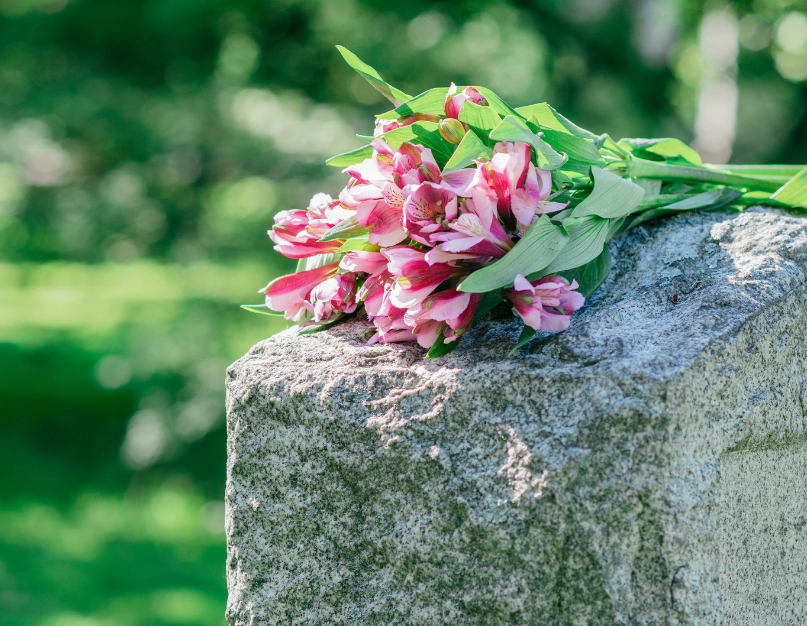
The loss of a loved one places a tremendous burden on surviving friends and family. On top of that emotional distress, funeral and monument prices are rising. In 2023, the National Funeral Directors Association (NFDA) reported that the average cost of a funeral, including viewing and burial, was $8,300—a 5.8% increase in just two years.
An often-overlooked aspect of funeral and burial arrangements is the cost of cemetery monuments. Most families who choose a burial want a marker that uniquely and appropriately honors their loved one and satisfies their wishes. Even those who choose cremation or another alternative desire a place and symbol to use for memorialization.
While researching headstone and monument costs, you will find that the price can vary dramatically based on memorial design. This is due to the number of factors involved in planning and creating a memorial.
The purpose of this headstone cost guide is to provide the knowledge necessary to help you:
At Milano Monuments, we proudly serve families and businesses across Cleveland, Ohio; Bedford, Ohio; Youngstown, Ohio; and communities throughout Ohio, Pennsylvania, and Michigan. Our reputation for memorial design craftsmanship and compassion also extends across the Upper Midwest, the Mid-Atlantic, and the Northeast, where we provide custom headstones, monuments, and engraving services. No matter where you are located, our dedicated team is committed to delivering exceptional quality and care, helping you honor loved ones with lasting tributes.
To view this guide as a PDF or to print it for later viewing, click here.
A monument stands as a permanent tribute to a departed soul, capturing their memory in something tangible. Unlike most commercial products you’ll purchase, grave markers are not mass-produced—nor should they be. Because of this, the customization of memorials directly impacts their cost. Key factors influencing the cost of cemetery monuments include:
Due to the unique nature of headstones, each customized, personalized feature influences the price.
Download this guide for later viewing here.
Cemetery monument prices are generally related to:
On the lower cost end is a flush, lawn-level grave marker, and an upright memorial is on the high end.
Later in this guide, you will see how the cost of each headstone also depends on the material’s quality, design details and more. As a baseline, here are general price ranges for each memorial type.
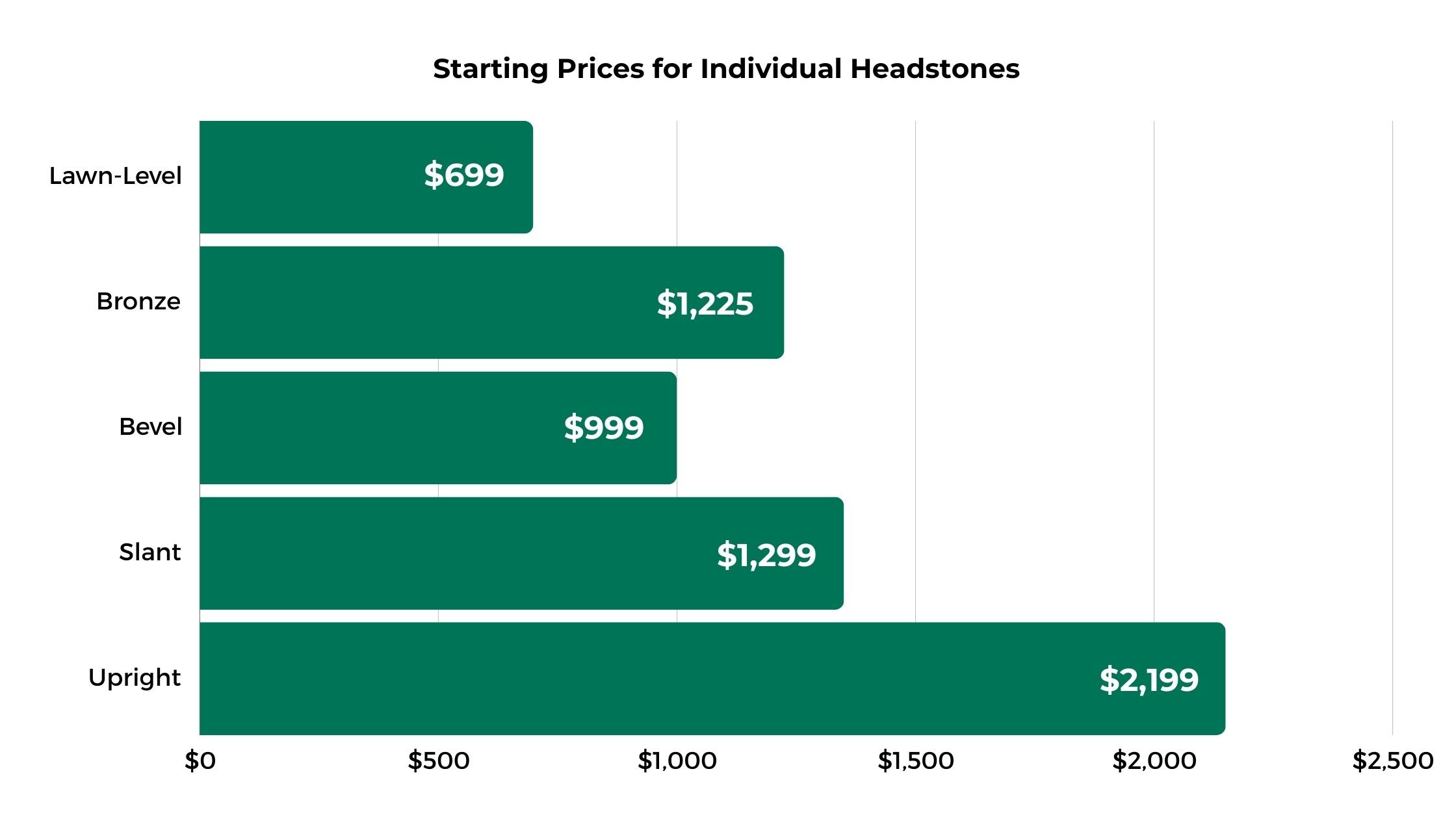
Note: Each cemetery will have rules and regulations on the type, size and material of permitted memorials.
Considered a “basic stone,” lawn-level memorials sit flush with the ground and are typically a rectangular or square shape. Lawn-level memorials are generally the most affordable headstone options.
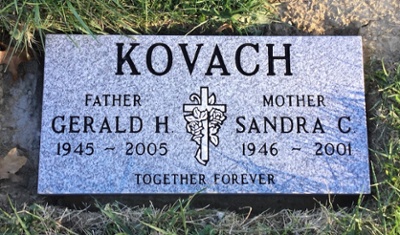
Often mounted on a granite base, bronze memorials sit flush with or are slightly raised off the ground. As the price range comparison chart showcases, bronze memorials have an especially wide variance in price because bronze can be used on a flush, bevel, slant or even an upright memorial.
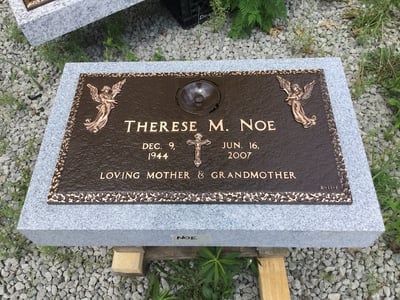
Affectionately called a “pillow,” bevel memorials rise a few inches above the ground and have a slight sloping shape.
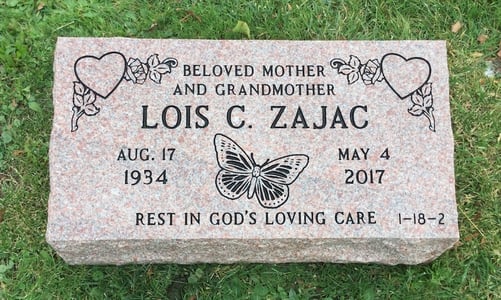
Slant memorials are cut at an angle to allow inscriptions to be seen from a distance.
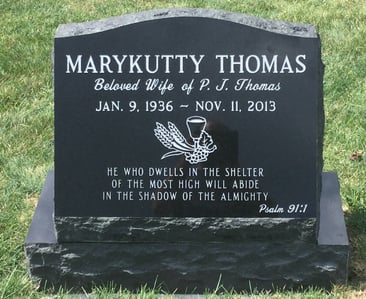
These large memorials are built to be admired from afar. Most commonly seen as rectangles or with rounded edges, upright memorials may also be unique shapes or accompanied by a statue.
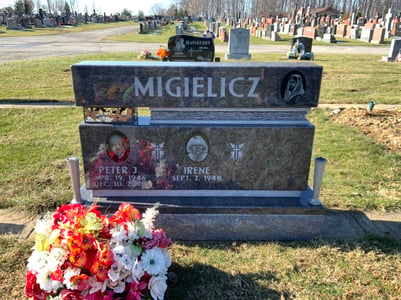
Related Resource: 7 Questions To Ask a Memorial Provider To Ensure You Get Your Money’s Worth
Even within one memorial type, the price variance can be hundreds or even thousands of dollars. The differences relate to factors of the monument provider, the material used and the family’s wishes. We explore these factors throughout the guide.
Download this guide for later viewing here.
The two primary material options for headstones are granite and bronze. Granite, a natural rock formed through geological processes over thousands or millions of years, offers a spectrum of colors including grays, blacks, reds, blues and browns. It is not artificially produced by humans or machines but rather results from the cooling of molten rock.
Key factors to consider when purchasing a granite memorial include its grade, color and variety.
As a lasting symbol of someone’s life, the fundamental expectation of granite is that it is durable. To help guarantee you a memorial that will endure for generations, the entire monument industry converted from softer rocks, like marble and slate, to granite, which does not naturally deteriorate even 1/1000th of an inch in a century.
Despite its natural strength, not all granite provides the same reliability.
Grade is the term used to signify the quality of a piece of granite. Granite quality may not be easily visible to the untrained eye, but grade reflects a piece of granite’s:
Low commercial grade granite is prone to chipping, degradation and discoloration over time. Craftspeople will have difficulty engraving or etching low-grade granite, especially for fine details. The low density, flaws and inconsistencies in poor granite diminish the material’s sharpness and pristine appearance when cut or polished.
Ask your memorial provider about their granite grade or quality, or ask if they have a warranty. Providers that offer a warranty on their headstones back up their words with a commitment to you and confidence in their granite.
Granite is a combination of various minerals and rocks, which explains the different colors, textures and patterns available.
More readily available colors, such as traditional grays seen in most cemeteries, are likely priced lower. Blue pearl or aurora red, however, are examples of more exquisite and rare granites that are priced higher due to their limited supply. Nearly any granite color you can imagine is available, it just depends on a memorial provider’s inventory, your timeline and, of course, your budget.
.jpg?width=447&height=335&name=MM_Granite%20Color%20Grid%20-%202023%20(with%20Tan%20Brown).jpg)
The price for granite varieties is not stagnant and can alter if an influx of a certain granite variety is introduced to the market.
Want to browse our selection of granite colors? Set up an appointment to see your options in person.
The other material option for consideration is bronze. If selected, bronze is typically mounted on a granite or cement base, in accordance with cemetery rules and regulations. Bronze, like granite, is meant to last thousands of years with almost no degradation. Though bronze is not susceptible to rust, regular upkeep is recommended to prevent corrosion from altering its color.
On a lawn-level, slant or upright monument, the bronze is placed and priced based on the number of characters or the intricacy of the design. Like granite, bronze cemetery monument prices can be broad, ranging from around a thousand dollars for a simple lawn-level headstone to tens of thousands of dollars for large and intricate bronze statues.
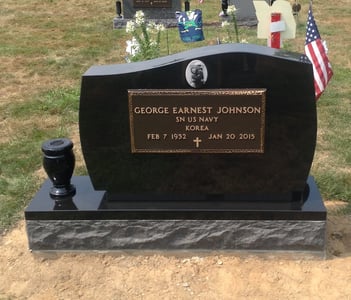
Because bronze is a metal, its price fluctuates with supply and demand. For example, something could cost $1,000 in 2020 and $3,000 in 2030, depending on the cost of the particular metal.
If you choose to work with a memorial manufacturer, they will have a great understanding of bronze monument prices at a given time. If working through a funeral home, cemetery or other third party, they will likely not have the same level of knowledge about the material’s source.
>>> Related Resource: Why Working With a Memorial Provider Is Cheaper Than a Cemetery
Once the memorial’s size, shape and material are selected, the canvas is in place. The final decisions—and perhaps those most intimately personal—are the words and images to be drawn in stone.
Though they do not impact the monument price as much as the size, shape and type, different design options have varying costs.
To view this guide as a PDF or to access a printable version for later viewing, click here.
Sandblasting is the standard method used for most lettering and many designs seen on memorials.
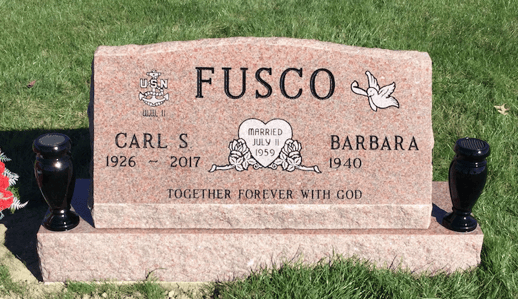
The characters and designs on this memorial were sandblasted.
Because sandblasting is the method most reputable memorial providers use for granite memorials, all standard headstone lettering should be included for the same cost, regardless of the number of characters.
Standard lettering and designs include:
Headstone paint for the lettering and designs is also included if the color is commonly used or already in stock.
Two etching methods can be employed in place of, or supplementary to, sandblasted designs. After sandblasting is complete, etching can add personalized designs, photos or landscape art to the memorial.
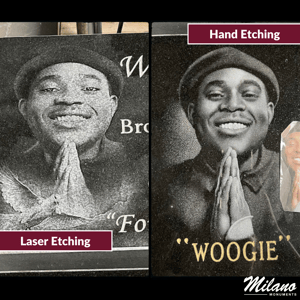
Hand Etching
Hand etching is a unique and difficult skill that adds incredible character and customization to a memorial. Talented hand etchers can take a scenic picture or multiple images of a person and create a one-of-a-kind image.
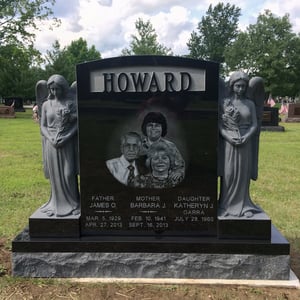
The portrait on the memorial above, for example, may have been created from three separate photos. Not only is hand etching an impressive precision skill, it is a true art that requires creativity and depth that a machine cannot yet create on its own.
Laser Etching
Laser etching is a less expensive alternative to hand etching, and is especially effective if a family wants an image replicated onto stone. Although it does not offer the artistic difference of hand etching or depth of sandblasting, laser etching leads to lower monument prices because it is burned on the surface.
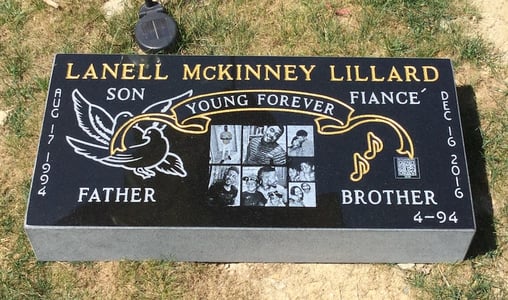
Pricing: Hand Etching vs. Laser Etching
Pricing and quality may vary by provider. But, to use as an example, below is pricing for hand and laser etchings at Milano Monuments. Prices may increase depending on the size or detail required to craft the etching.
Single portrait:
Double portrait:
For other images, such as scenery, pets and symbols, pricing depends on the picture’s complexity.
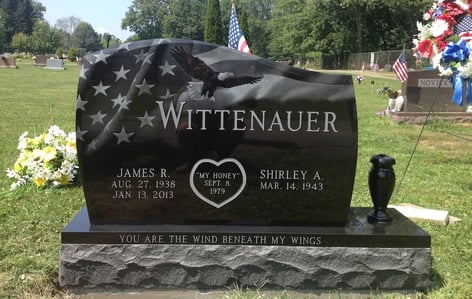
Milano Monuments is thankful to have an extremely talented hand etcher, Peter Viyuk, who can personalize your photograph. Contact us to meet Peter and discuss a possible hand etching.
There are a few other offerings from memorial providers that create especially distinct memorials and will affect the final monument cost.
Sculptures & Carving
Few features set a headstone apart like a unique sculpture or carving. A carving, such as the butterflies in this picture, can be personalized for the family or individual.
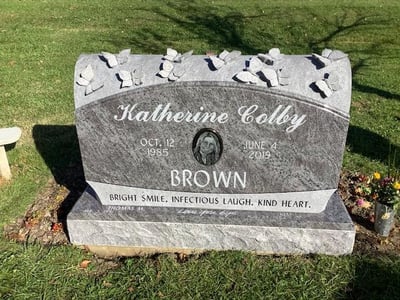 If your cemetery allows, another option is to have a bronze or granite sculpture created, and placed on or near the memorial. The memorial pictured here features a bronze angel sculpture accenting a granite headstone.
If your cemetery allows, another option is to have a bronze or granite sculpture created, and placed on or near the memorial. The memorial pictured here features a bronze angel sculpture accenting a granite headstone.
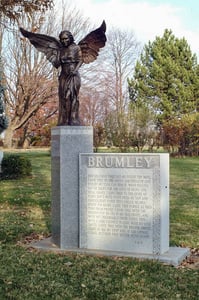
Pricing for sculptures and carvings depends on a number of factors, including the:
Ceramic Photos
Ceramic or porcelain photos are typically used as an alternative to hand or laser etching to put an individual or family portrait on a memorial.
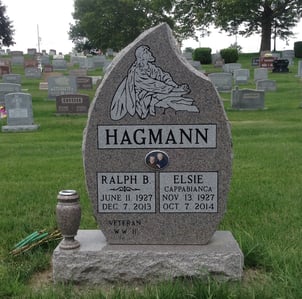
If considering a ceramic or porcelain photo, here’s what to know:
Vases
Sometimes the best complement to a specialized memorial is something that can be changed over time. By adding one or multiple vases to a headstone, fresh and colorful flowers can be placed for special occasions.
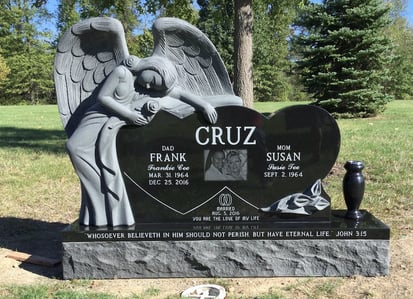
Vases can be unique, just like the memorials with which they are combined. These come in several shapes, sizes and materials, and can be in the ground or attached to the memorial’s base or top. Materials include:
Quality granite vases may cost $250 and up depending on the material, shape, size and whether it is joined with the memorial or placed in the ground. Note: Be sure to check with your memorial provider or chosen cemetery to confirm that vases are permitted.
Other Headstone Accents
A number of other unique accents can be added to your loved one’s headstone, including:

During the headstone design process, your memorial provider will be able to explain how each may impact your final monument cost.
Ready to speak to a memorial provider? Reach out to Milano Monuments to schedule your in-person or virtual appointment today.
Download this guide for later viewing here.
Once all other factors have been considered, it’s worth understanding how the memorial provider can affect your monument price.
When all else is equal between the granite quality, shape, size and design details, what difference remains? Craftsmanship.
The most personal aspects of a headstone are the words and design elements inscribed on the piece of granite. The best craftspeople in the world make your vision into art that is beautiful to look at and built to last.
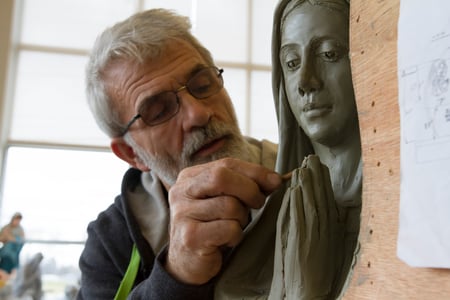
For instance, Milano Monuments offers deeper characters and designs. These will retain their color and provide more contrast to bystanders.
Hand etching also creates a more personalized and memorable piece than machines or average designers can provide.
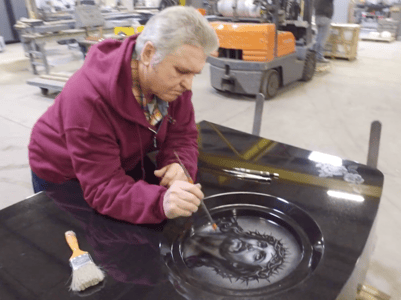
While these design differences may come at a cost, the difference you experience from day one through multiple generations is significant.
The amount of granite, degree of personalization and shape uniqueness all have a calculable value associated with them. What is hard to identify without viewing the final product is reputation.
With reputation comes assurance. A well-known, trusted provider with a history of satisfied families and high-quality craftsmanship may price their product slightly higher than a newcomer to the industry.
Not only is there reputation in a name, but in a provider’s reliable quality and consistency. To gauge a provider’s reputation, visit their website, find a portfolio of past work and ask about family testimonials. If these aren’t readily available, it may be a red flag.
You want to choose a memorial provider that offers the best value and won’t increase monument prices just to make more money. A reputable memorial provider will respect your wishes and partner with you to create the most personalized, beautiful headstone possible, in your budget.
Funeral homes and cemeteries often help coordinate the memorial and burial plot purchase. And, out of convenience, many families may choose to take this offer.
However, going directly to a memorial provider removes an additional step in the process. It also opens up all of the monument provider’s offerings, not just what the funeral home or cemetery can offer. Direct communication with a memorial provider and its designers also helps ensure all of your design and inscription wishes come to fruition.
Related Resource: Your Questions About Buying a Memorial from a Cemetery, Answered
In 2018, ecommerce sales across all products accounted for just 9.5% of all retail sales. That figure jumped to 16.4% by 2023.
This growing trend has started to infiltrate the headstone business—but should it?
Purchasing memorials online may be easy and fast, but if you’re looking for the best deal, an online retailer will likely give you more headaches than benefits. Why?
To view this guide as a PDF or to access a printable version for later viewing, click here.
We hope this headstone cost guide has helped you understand what's involved in the pricing of a memorial. At Milano Monuments, we work individually with each family and individual to design a headstone that is both personal and exceptional. Whether it is for yourself or a loved one, we will be transparent and helpful, and take the time to answer any questions you may have during this difficult time.
We believe in educating families so they understand the value of this gift that will last forever in history. We would love to help you get an affordable headstone option that also has a memorial design you'll love.
Schedule an appointment and one of our family representatives will partner with you, handle all communication with the cemetery (even for one out of the area or in a different state) and keep you updated as the headstone is created.
1. How much does a headstone cost?
Unlike most commercial products you’ll purchase, grave markers are not mass-produced—nor should they be. Because of this, the customization of memorials directly impacts their cost. Key factors influencing the cost of cemetery monuments include:
To determine the exact cost of a headstone, you will want to work with a trustworthy memorial provider.
2. How to get a custom headstone?
At Milano Monuments, we work individually with each family and individual to design a custom headstone that is both personal and exceptional. Whether it is for yourself or a loved one, we will be transparent and helpful, and take the time to answer any questions you may have during this difficult time.
3. How expensive is a cemetery monument?
Upright cemetery memorials are built to be admired from afar. Most commonly seen as rectangles or with rounded edges, upright memorials may also be unique shapes or accompanied by a statue. Working with a memorial provider to determine design and materials will help you find out the exact cost of a monument.